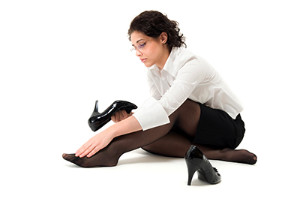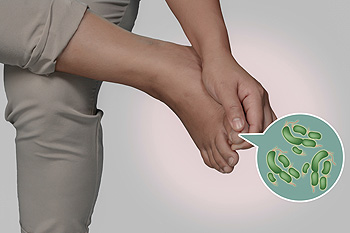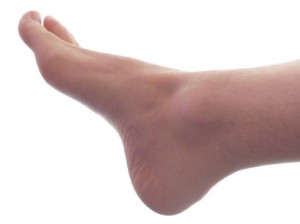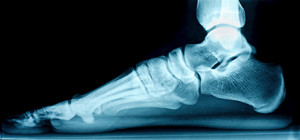Middlefield (860) 349-8500
Wallingford (203) 294-4977
Middlefield (860) 349-8500
Wallingford (203) 294-4977
 Many women choose to wear high heels so the feet and legs can have a luxurious look. Research has shown there may be reasons why high heels should be avoided. Toenails can become damaged, and wearing certain high heels is said to be the number one cause of ingrown toenails. Many women tend to fall much more frequently when this type of shoe is worn, and this may cause possible bone fractures. If there is not an adequate amount of room to move about within the shoe, it can cause an already existing case of bunions to become even worse. It’s suggested to limit wearing high heels to a few days per week, and to also choose a lower heel. Doing these things may provide ample relief. Additionally, having your feet massaged regularly will not only feel good, but may aid in the overall health of the foot.
Many women choose to wear high heels so the feet and legs can have a luxurious look. Research has shown there may be reasons why high heels should be avoided. Toenails can become damaged, and wearing certain high heels is said to be the number one cause of ingrown toenails. Many women tend to fall much more frequently when this type of shoe is worn, and this may cause possible bone fractures. If there is not an adequate amount of room to move about within the shoe, it can cause an already existing case of bunions to become even worse. It’s suggested to limit wearing high heels to a few days per week, and to also choose a lower heel. Doing these things may provide ample relief. Additionally, having your feet massaged regularly will not only feel good, but may aid in the overall health of the foot.
High heels have a history of causing foot and ankle problems. If you have any concerns about your feet or ankles, contact Dr. Gordon Fosdick from Affiliated Foot Care Center. Our doctor can provide the care you need to keep you pain-free and on your feet.
Effects of High Heels on the Feet
High heels are popular shoes among women because of their many styles and societal appeal. Despite this, high heels can still cause many health problems if worn too frequently.
Which Parts of My Body Will Be Affected by High Heels?
What Kinds of Foot Problems Can Develop from Wearing High Heels?
How Can I Still Wear High Heels and Maintain Foot Health?
If you want to wear high heeled shoes, make sure that you are not wearing them every day, as this will help prevent long term physical problems. Try wearing thicker heels as opposed to stilettos to distribute weight more evenly across the feet. Always make sure you are wearing the proper shoes for the right occasion, such as sneakers for exercising. If you walk to work, try carrying your heels with you and changing into them once you arrive at work. Adding inserts to your heels can help cushion your feet and absorb shock. Full foot inserts or metatarsal pads are available.
If you have any questions please feel free to contact our offices located in Middlefield and Wallingford, CT . We offer the newest diagnostic and treatment technologies for all your foot and ankle needs.
 A fungal infection that develops in the skin of the feet, which may be referred to as athlete's foot or tinea pedis, often produces discomfort and pain. Probable symptoms may include itching and burning skin in addition to blisters that may form in between the toes. Athlete’s foot is typically caused by a fungus that thrives in warm and dark environments and may spread when the foot touches the contaminated area. This type of fungus often lives in public showers and pools, and may be prevented from spreading by wearing appropriate shoes in these areas. If you are affected by this condition, it may be beneficial to wash your feet often followed by thoroughly drying in between the toes. If your socks should become wet from excess moisture, it’s important to change them frequently in addition to wearing cotton socks which may aid in absorbing additional perspiration. For severe infections, a consultation with a podiatrist is advised for more aggressive treatment options
A fungal infection that develops in the skin of the feet, which may be referred to as athlete's foot or tinea pedis, often produces discomfort and pain. Probable symptoms may include itching and burning skin in addition to blisters that may form in between the toes. Athlete’s foot is typically caused by a fungus that thrives in warm and dark environments and may spread when the foot touches the contaminated area. This type of fungus often lives in public showers and pools, and may be prevented from spreading by wearing appropriate shoes in these areas. If you are affected by this condition, it may be beneficial to wash your feet often followed by thoroughly drying in between the toes. If your socks should become wet from excess moisture, it’s important to change them frequently in addition to wearing cotton socks which may aid in absorbing additional perspiration. For severe infections, a consultation with a podiatrist is advised for more aggressive treatment options
Athlete’s Foot
Athlete’s foot is often an uncomfortable condition to experience. Thankfully, podiatrists specialize in treating athlete’s foot and offer the best treatment options. If you have any questions about athlete’s foot, consult with Dr. Gordon Fosdick from Affiliated Foot Care Center. Our doctor will assess your condition and provide you with quality treatment.
What Is Athlete’s Foot?
Tinea pedis, more commonly known as athlete’s foot, is a non-serious and common fungal infection of the foot. Athlete’s foot is contagious and can be contracted by touching someone who has it or infected surfaces. The most common places contaminated by it are public showers, locker rooms, and swimming pools. Once contracted, it grows on feet that are left inside moist, dark, and warm shoes and socks.
Prevention
The most effective ways to prevent athlete’s foot include:
Symptoms
Athlete’s foot initially occurs as a rash between the toes. However, if left undiagnosed, it can spread to the sides and bottom of the feet, toenails, and if touched by hand, the hands themselves. Symptoms include:
Diagnosis and Treatment
Diagnosis is quick and easy. Skin samples will be taken and either viewed under a microscope or sent to a lab for testing. Sometimes, a podiatrist can diagnose it based on simply looking at it. Once confirmed, treatment options include oral and topical antifungal medications.
If you have any questions, please feel free to contact our offices located in Middlefield and Wallingford, CT . We offer the newest diagnostic and treatment technologies for all your foot care needs.
 People who are physically active will often feel the effects of corns on the feet. This condition is generally caused by repetitive friction and will commonly develop on the pinky toe. Despite the fact that the formation of corns is the body's natural defense mechanism, it often produces severe pain and discomfort. The affected area becomes thicker as a measure to protect the skin. This develops into a corn, and is typically caused by wearing shoes that fit incorrectly. Additionally, soft corns may develop between the toes as a result of excess moisture that may accumulate. This may often be the result of wearing socks that are not made of a breathable material. Corns may disappear when the correct shoes are worn but if severe pain is experienced from a corn, please consult with a podiatrist.
People who are physically active will often feel the effects of corns on the feet. This condition is generally caused by repetitive friction and will commonly develop on the pinky toe. Despite the fact that the formation of corns is the body's natural defense mechanism, it often produces severe pain and discomfort. The affected area becomes thicker as a measure to protect the skin. This develops into a corn, and is typically caused by wearing shoes that fit incorrectly. Additionally, soft corns may develop between the toes as a result of excess moisture that may accumulate. This may often be the result of wearing socks that are not made of a breathable material. Corns may disappear when the correct shoes are worn but if severe pain is experienced from a corn, please consult with a podiatrist.
Corns can make walking very painful and should be treated immediately. If you have questions regarding your feet and ankles, contact Dr. Gordon Fosdick of Affiliated Foot Care Center. Our doctor will treat your foot and ankle needs.
Corns: What Are They? And How Do You Get Rid of Them?
Corns are thickened areas on the skin that can become painful. They are caused by excessive pressure and friction on the skin. Corns press into the deeper layers of the skin and are usually round in shape.
Ways to Prevent Corns
There are many ways to get rid of painful corns such as:
Treating Corns
Although most corns slowly disappear when the friction or pressure stops, this isn’t always the case. Consult with your podiatrist to determine the best treatment option for your case of corns.
If you have any questions please feel free to contact our offices located in Middlefield and Wallingford, CT . We offer the newest diagnostic and treatment technologies for all your foot and ankle needs.
 The condition referred to as flat feet which is also known as fallen arches, occurs when the arch is absent from the sole of the foot. As a result, the feet may point outward as the foot rolls to the inner side while standing or walking. Some patients may experience pain in the feet, and may vary in intensity depending on the severity of how fallen the arches are. There may be several causes of flat feet, including family history, an injury the foot or ankle incurs or certain types of arthritis. Most babies are born with flat feet and the arch will gradually appear as the feet become stronger when walking begins. It’s suggested to schedule a consultation with a podiatrist who can suggest treatment options for this condition, which may include wearing custom made orthotics.
The condition referred to as flat feet which is also known as fallen arches, occurs when the arch is absent from the sole of the foot. As a result, the feet may point outward as the foot rolls to the inner side while standing or walking. Some patients may experience pain in the feet, and may vary in intensity depending on the severity of how fallen the arches are. There may be several causes of flat feet, including family history, an injury the foot or ankle incurs or certain types of arthritis. Most babies are born with flat feet and the arch will gradually appear as the feet become stronger when walking begins. It’s suggested to schedule a consultation with a podiatrist who can suggest treatment options for this condition, which may include wearing custom made orthotics.
Flatfoot is a condition many people suffer from. If you have flat feet, contact Dr. Gordon Fosdick from Affiliated Foot Care Center. Our doctor will treat your foot and ankle needs.
What Are Flat Feet?
Flatfoot is a condition in which the arch of the foot is depressed and the sole of the foot is almost completely in contact with the ground. About 20-30% of the population generally has flat feet because their arches never formed during growth.
Conditions & Problems:
Having flat feet makes it difficult to run or walk because of the stress placed on the ankles.
Alignment – The general alignment of your legs can be disrupted, because the ankles move inward which can cause major discomfort.
Knees – If you have complications with your knees, flat feet can be a contributor to arthritis in that area.
Symptoms
Treatment
If you are experiencing pain and stress on the foot you may weaken the posterior tibial tendon, which runs around the inside of the ankle.
If you have any questions please feel free to contact our offices located in Middlefield and Wallingford, CT . We offer the newest diagnostic and treatment technologies for all your foot and ankle needs.